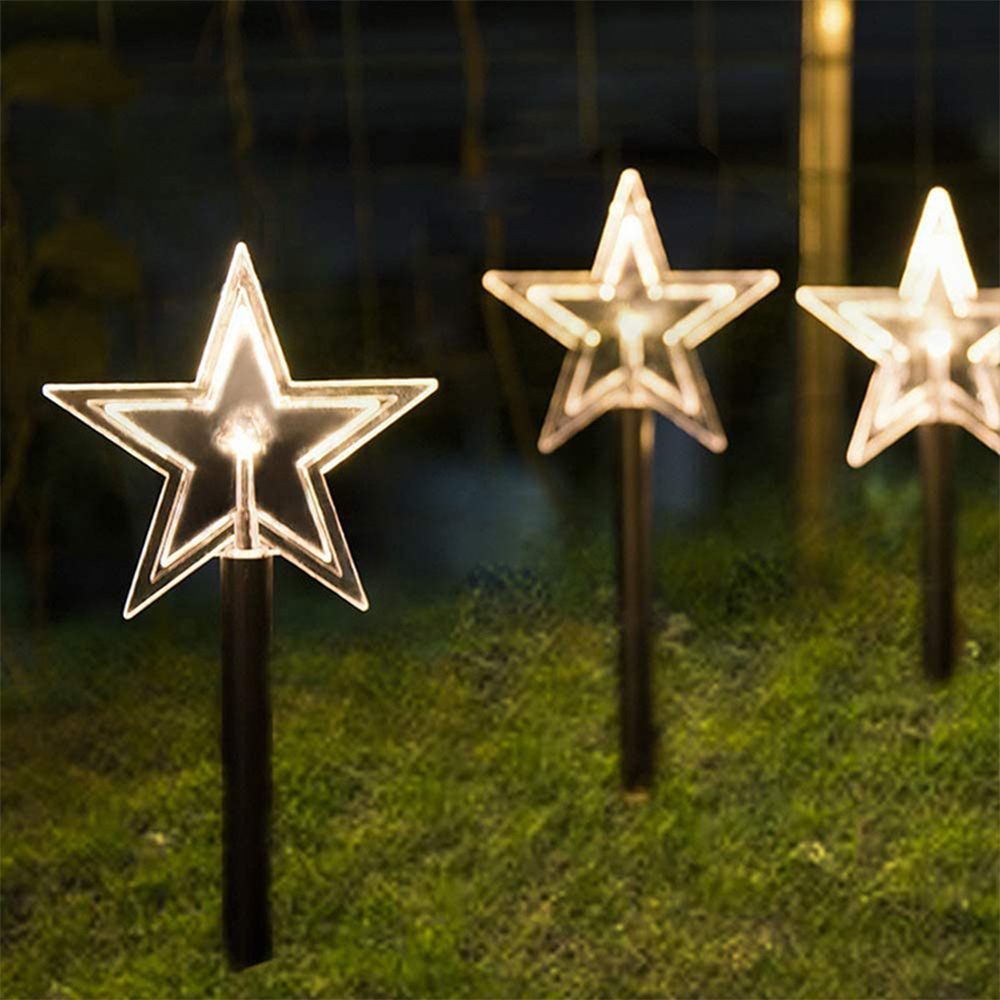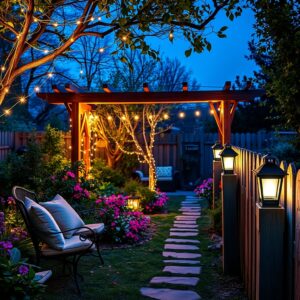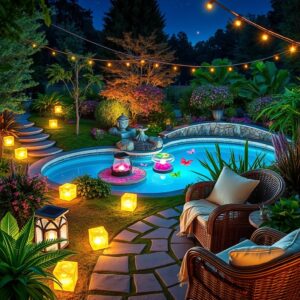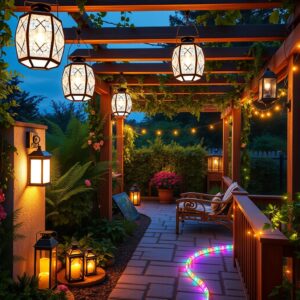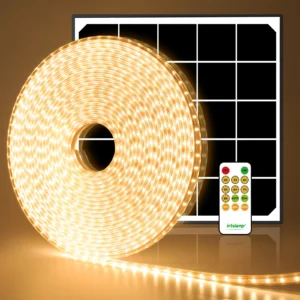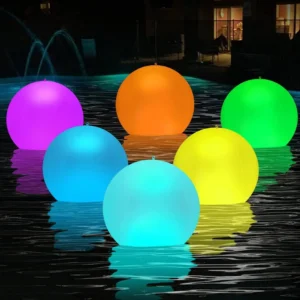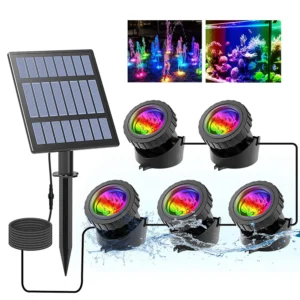LED lights are becoming increasingly popular due to their long lifespan and energy efficiency. However, understanding the safety of LED lights, their performance, and their impact on health is crucial. This article addresses frequently asked questions about LED lighting to help you use them wisely and safely.
Safety of LED Lights
Can LED Lights Catch on Fire?
LED lights operate using a technology known as electroluminescence, where electrical current passes through a semiconductor to produce light. This process is fundamentally different from traditional incandescent bulbs, which generate light by heating a filament until it glows. As a result, LED lights produce significantly less heat, making them much safer in terms of fire risk. While LEDs may feel warm to the touch during operation, the heat they generate is far lower than that of incandescent bulbs. This reduced heat output minimizes the chances of ignition, making LED lights a safer choice for various applications, including enclosed fixtures.
Are LED Fairy Lights Dangerous?
When it comes to fairy lights, LED versions are considerably safer than older types that run on higher voltages, such as 240V mains fairy lights. Traditional fairy lights can pose a fire hazard if damaged, as they can overheat and ignite flammable materials nearby. In contrast, LED fairy lights operate at lower voltages and produce minimal heat, significantly reducing their risk. Additionally, their robust design makes them less prone to shattering, especially when used in open areas. Overall, opting for LED fairy lights enhances safety without compromising aesthetic appeal.
Is It Okay to Leave LED Lights on All the Time?
One of the significant advantages of LED lights is their ability to operate continuously without safety concerns. Unlike incandescent or fluorescent bulbs, which can overheat and become fire hazards when left on for long periods, LED lights are designed for durability and efficiency. Their low power consumption means they can stay on for hours or even days without significantly increasing your energy bill. Whether used for mood lighting, task lighting, or decorative purposes, leaving LED lights on is generally safe, making them an excellent choice for prolonged use in homes and businesses.
Can LED Lights Get Wet?
While some LED lights are designed to be water-resistant or waterproof, caution is necessary when exposing them to moisture. Wet-rated LED lights can handle splashes and moisture, making them suitable for outdoor use or areas with high humidity. However, completely submerging LED lights can lead to serious risks, as water is a conductor of electricity. If water enters the fixture, it can create a potential electrocution hazard. Therefore, it’s essential to follow manufacturer guidelines regarding moisture exposure and to ensure that only wet-rated LED lights are used in areas prone to water exposure.
Performance of LED Lights
How Long do Batteries Last with LED Lights?
The battery life of LED lights can vary significantly based on the specific setup and type of LED used. For example, micro LED lights powered by three AA batteries can last over 100 hours due to their efficient energy consumption. In contrast, standard LED battery-operated lights typically provide about 18 to 24 hours of illumination per battery set. Factors influencing battery life include the quality of the batteries, the brightness level of the LEDs, and the overall design of the light fixture. For optimal performance, using high-quality rechargeable batteries can extend usage time and reduce waste.
Why do LED Lights Burn Out so Fast?
While LED lights are renowned for their longevity, some can burn out prematurely due to various factors. One major reason is overheating, which occurs when components within the LED, such as the driver or diode, are not adequately cooled. Unlike incandescent bulbs that release heat as light, LEDs are more efficient but can still generate heat if not designed properly. Poor heat dissipation can lead to component failure, reducing the overall lifespan of the light. To mitigate this issue, choosing high-quality LEDs with good heat management features is crucial for maximizing longevity.
What Happens When LED Lights Burn Out?
When LED lights reach the end of their lifespan, they don’t burn out in the same dramatic way as incandescent or fluorescent bulbs. Instead, LEDs gradually lose brightness over time, a phenomenon known as lumen depreciation. This means that rather than a sudden blackout, users may notice a gradual dimming of the light. High-quality LED bulbs can last up to 25,000 hours or more, making them a reliable choice. In contrast, incandescent bulbs can burn out suddenly after around 1,000 hours, while fluorescent lights typically last about 7,000 to 15,000 hours. This gradual decline in LED performance is often more manageable for users.
Why are Half of the LED Light Not Working?
If only part of an LED light strand is functioning, it may indicate a malfunction that can often be diagnosed through simple troubleshooting. Common causes include a loose or damaged bulb, which can prevent the entire strand from lighting up. Inspecting the connections and replacing any burned-out bulbs can help restore functionality. Additionally, checking the wiring for breaks or frays can pinpoint issues. If only one half of a strand is working, it may also be beneficial to test each bulb individually to identify the source of the problem effectively.
Why Did the LED Lights Suddenly Stop Working?
A sudden failure of LED lights can often be attributed to several common issues. One frequent culprit is a tripped circuit fuse, especially if the LED was part of a larger lighting system. If this is not the case, examining the light fixture for loose connections or faulty wiring is essential. Additionally, newer installations may encounter compatibility issues with existing electrical setups, which can prevent proper function. By ensuring all connections are secure and testing the circuit, many problems can be easily resolved, restoring the LED lights to working condition.
LED Lights’ Impact on the Human Body
What Color LED Lights are Bad For Sleep?
Exposure to blue light, particularly in the evening, can significantly disrupt sleep patterns. Blue light, which is emitted by many electronic devices and LED lights, affects the production of melatonin, a hormone crucial for regulating sleep. When the body is exposed to blue light after sunset, it can confuse the circadian rhythm, tricking the brain into thinking it’s still daytime. This can result in difficulties falling asleep, reduced sleep quality, and daytime fatigue. For optimal sleep hygiene, it’s advisable to limit blue light exposure in the hours leading up to bedtime.
What Color LED Lights Should I Sleep With?
For promoting better sleep, red light is the most beneficial color to use in the evening. Unlike blue light, red light has a lower color temperature, which is less likely to interfere with melatonin production. Red light can help create a calming environment that encourages relaxation and prepares the body for sleep. Additionally, red light is less harsh on the eyes and does not cause the same level of visual discomfort as brighter, cooler colors. Incorporating red LED lights into your nighttime routine can contribute to improved sleep quality and overall well-being.
Do LED Lights Give Off Radiation?
A common concern regarding LED lights is the potential for radiation emission. However, it’s important to clarify that LED lights do not emit harmful radiation like some other forms of lighting. Unlike fluorescent lights, which can release ultraviolet (UV) radiation, LED lights are safe as they do not produce UV or infrared rays. Furthermore, LEDs are designed to be energy-efficient and environmentally friendly, containing no mercury or other toxic substances. This makes LED lights a safe choice for indoor lighting without posing health risks related to radiation exposure.
Can LED Lights Cause Skin Damage?
LED light therapy is often touted for its potential therapeutic benefits, but there are concerns about its impact on the skin. Generally, LED light therapy is considered a safe option for skin treatments, particularly in the context of acne and anti-aging treatments. Unlike UV light, which can cause skin damage and increase the risk of skin cancer, LED therapy uses specific wavelengths that do not harm the skin. However, individuals should still be cautious and consult with a dermatologist to ensure they are using LED treatments appropriately, as excessive exposure, even to safe wavelengths, can lead to irritation or adverse effects.
Are LED Lights Bad For Your Eyes?
Research has increasingly focused on the effects of blue light emitted from LED lights on eye health. Prolonged exposure to blue light, particularly from screens and bright LED lighting, has been linked to digital eye strain, discomfort, and potential long-term damage to retinal cells. Studies suggest that chronic exposure to high levels of blue light may increase the risk of conditions like cataracts and age-related macular degeneration. While the immediate effects of blue light exposure can include blurred vision and headaches, ongoing research continues to explore the full extent of its impact on eye health.
How Can We Protect Our Eyes from LED Light?
To mitigate the risks associated with blue light exposure, several protective measures can be taken. First, consider using anti-reflective lenses or blue light-blocking glasses, which can help reduce glare and eye strain when using digital devices. Additionally, practicing the 20-20-20 rule—taking a 20-second break to look at something 20 feet away every 20 minutes—can help alleviate digital eye strain. Ensuring that your lighting is well-distributed and avoiding bright lights in the evening can also support eye health. Overall, being mindful of light exposure and implementing these recommendations can help protect your eyes from potential harm associated with LED lighting.
Which Light is Best For Eyes?
Warm light, including that from incandescent and filtered natural sources, is best for eye comfort. Ensure proper lighting throughout your home and workspace.
Other Common Concerns
Do LED Lights Attract Bugs?
Most LED lights emit minimal UV light, but the blue light they produce can attract bugs, as many insects are drawn to blue wavelengths.
Conclusion
Understanding LED light safety, performance, and health impacts is essential for making informed choices. By following the guidelines and considerations outlined in this article, you can enjoy the benefits of LED lighting while minimizing any risks.

